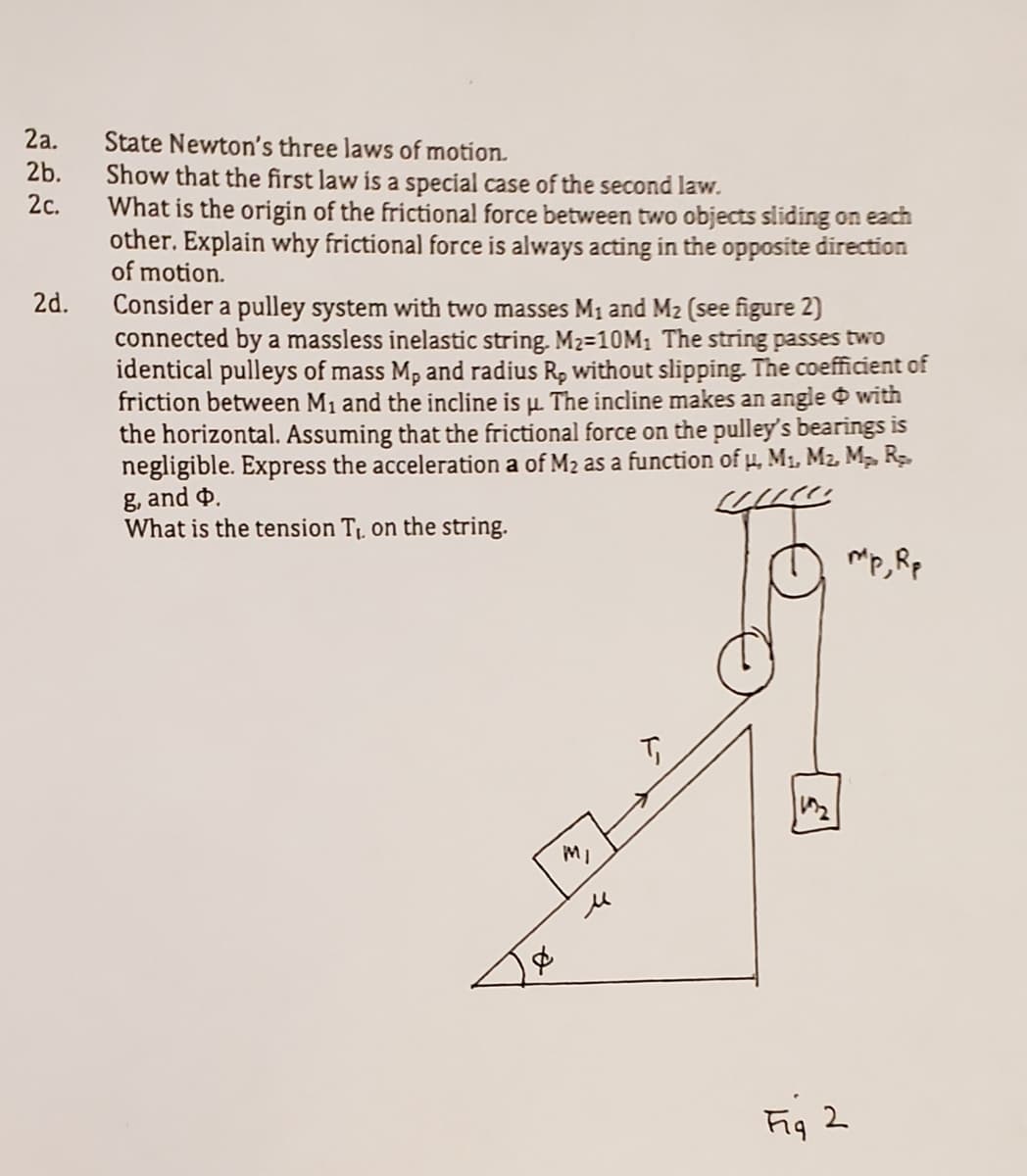College Physics
11th Edition
ISBN:9781305952300
Author:Raymond A. Serway, Chris Vuille
Publisher:Raymond A. Serway, Chris Vuille
Chapter7: Rotational Motion And Gravitation
Section: Chapter Questions
Problem 54AP: A 0.400-kg pendulum bob passes through the lowest part of its path at a speed of 3.00 m/s. (a) What...
Related questions
Concept explainers
Rotational Equilibrium And Rotational Dynamics
In physics, the state of balance between the forces and the dynamics of motion is called the equilibrium state. The balance between various forces acting on a system in a rotational motion is called rotational equilibrium or rotational dynamics.
Equilibrium of Forces
The tension created on one body during push or pull is known as force.
Question
Consider the following pulley system (see photo). M1 and M2 are connected by massless inelastic string. Assuming the frictional force on the pulleys bearings is negligible. Express acceleration of as a function of the listed components. Then find the tension on the string.

Transcribed Image Text:2а.
State Newton's three laws of motion.
2b.
Show that the first law is a special case of the second law.
What is the origin of the frictional force between two objects sliding on each
other. Explain why frictional force is always acting in the opposite direction
of motion.
2с.
2d.
Consider a pulley system with two masses M1 and M2 (see figure 2)
connected by a massless inelastic string. M2=10M1 The string passes two
identical pulleys of mass M, and radius R, without slipping. The coefficient of
friction between M1 and the incline is µ. The incline makes an angle with
the horizontal. Assuming that the frictional force on the pulley's bearings is
negligible. Express the acceleration a of M2 as a function of µ, M1, Mz M, R
g, and o.
What is the tension T. on the string.
mp, Rp
Fig 2
Expert Solution
This question has been solved!
Explore an expertly crafted, step-by-step solution for a thorough understanding of key concepts.
Step by step
Solved in 2 steps with 1 images

Knowledge Booster
Learn more about
Need a deep-dive on the concept behind this application? Look no further. Learn more about this topic, physics and related others by exploring similar questions and additional content below.Recommended textbooks for you

College Physics
Physics
ISBN:
9781305952300
Author:
Raymond A. Serway, Chris Vuille
Publisher:
Cengage Learning

Physics for Scientists and Engineers with Modern …
Physics
ISBN:
9781337553292
Author:
Raymond A. Serway, John W. Jewett
Publisher:
Cengage Learning

Physics for Scientists and Engineers
Physics
ISBN:
9781337553278
Author:
Raymond A. Serway, John W. Jewett
Publisher:
Cengage Learning

College Physics
Physics
ISBN:
9781305952300
Author:
Raymond A. Serway, Chris Vuille
Publisher:
Cengage Learning

Physics for Scientists and Engineers with Modern …
Physics
ISBN:
9781337553292
Author:
Raymond A. Serway, John W. Jewett
Publisher:
Cengage Learning

Physics for Scientists and Engineers
Physics
ISBN:
9781337553278
Author:
Raymond A. Serway, John W. Jewett
Publisher:
Cengage Learning

Physics for Scientists and Engineers, Technology …
Physics
ISBN:
9781305116399
Author:
Raymond A. Serway, John W. Jewett
Publisher:
Cengage Learning

Physics for Scientists and Engineers: Foundations…
Physics
ISBN:
9781133939146
Author:
Katz, Debora M.
Publisher:
Cengage Learning

An Introduction to Physical Science
Physics
ISBN:
9781305079137
Author:
James Shipman, Jerry D. Wilson, Charles A. Higgins, Omar Torres
Publisher:
Cengage Learning